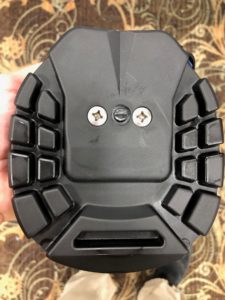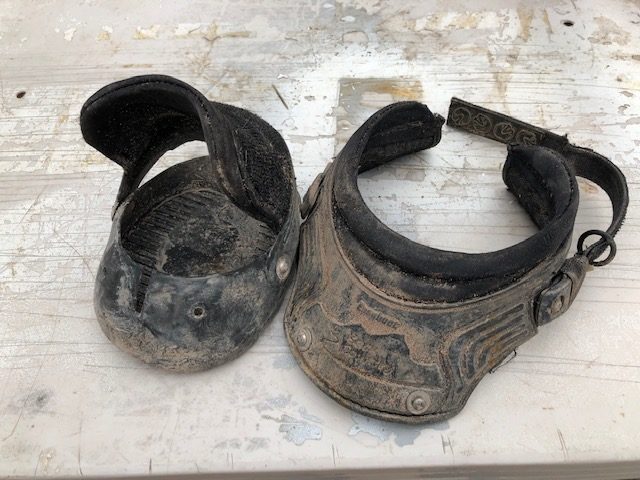No one is under the illusion that horses are inexpensive, right? Right. So as equestrians, we get good at pinching pennies, saving up, and budgeting our horse wants and needs. Hoof boots are a big initial investment that often save us some money compared to the price of shoeing a horse. A lot of us don’t do it for the financial benefit, though, but rather for the benefit of the horse.
When a boot wears out or a part breaks it can be frustrating and worrisome. Is this going to break the bank fixing or replacing this boot? Here are some tips to help you decide when it is the right time to invest in a new boot, and when you can save some money and repair the boot.

A few questions to ask yourself:
- Does the boot have replaceable parts? (Most of our boots do, but not all of them.)
- Is the tread on the bottom of the boot still in good condition? The tread will wear out over time just like the tread wears out on the tires on your car.
- Did the boot break because of a poor fit, poor form to function, is it old and worn out, or was it simply an accident?
Replace
Replace the boot if any of the following factors apply:
- The parts needed to fix it are close to the cost of a new boot
- The tread is worn down
- The hoof has changed shape
- The replaceable part you need is not available
Repair
If you can and need to make repairs, then here are a few things to keep in mind.

- Depending on how much you have used the boot that you are repairing, it is possible that the base of the boot will have stretched out a bit. This is important to note if you are replacing a gaiter on these boots because you will find that it can be more difficult to get the gaiter holes to match up with the base of the stretched out boot.
- Take note of the size of your boot before you go to order. Most replacement parts are size specific. If the size you are looking for is out of stock, you can potentially order a difference size and modify it. For example, if the Easyboot Epic cable is out of stock in the size you need, go up to the next size and trim the excess wire to fit the boot you have. If the Glove Gaiter is out of stock in the size you need, try the half size larger. The holes should still line up, and it may even make it easier to apply if the base of the boot is stretched out some.
- Don’t feel like you have to make it up as you go. Do some research and watch repair videos that demonstrate how to do the desired repair. If you don’t see the instructions you’re looking for, or if you want more information, please contact our Product Specialist team at 800-447-8836. We’re happy to explain what we can over the phone or possibly create a demonstration video for you if one is not available.
Work smarter, not harder!
Tools are going to be your extra set of hands. They are going to make the process easier and help you get the job done quickly. Consider using some of the following tools when completing your repairs.
- Vice grips ARE. YOUR. BEST. FRIEND. I cannot stress enough how handy this tool is. It is your extra set of hands when doing repairs. It will save your hand strength as well as keep parts in place while you are applying t-nuts, washers, and screws. Needle nose pliers will also work if you do have a helper with an extra set of hands available.
- A screw driver that fits properly will keep you from stripping your screws.
- If you need to create holes in a power strap or through the base of a boot, a sharp leather hole punch, wood burning tool, or an electric drill will make these tasks easier.
As always, make your best judgement based on what is going to work for you, your horse, and your bank account. We have a couple of options for gently used boots, the Bargain Bin and the Certified Used program, if you need to replace a boot at a lower cost. Keep in mind that our website, blog, and Youtube page have a variety of instructions and guidance for most booting needs. If you need extra assistance please reach out to our Product Specialist team. We are here to help you get booted and back on your horse!






When you are looking at having to replace a boot for whatever reason-
Your remaining boot has obvious tread wear. At what point do you replace both? How much does it matter if one boot has significant wear and the other is new?
We would recommend replacing a boot with obvious tread wear when the tread is less than 1/8 of an inch higher than the base of the boot. It shouldn’t make too much of a difference to have one new boot and one worn boot on your horse’s hooves unless there is enough of a difference between the two tread heights that your horse’s balance is being negatively affected. Judging your horse’s balance and how much difference is too much difference is subjective and can depend on several factors with each individual horse, so sometimes all you can do is some trial and error to find what works best for your horse specifically.
Comments are closed.